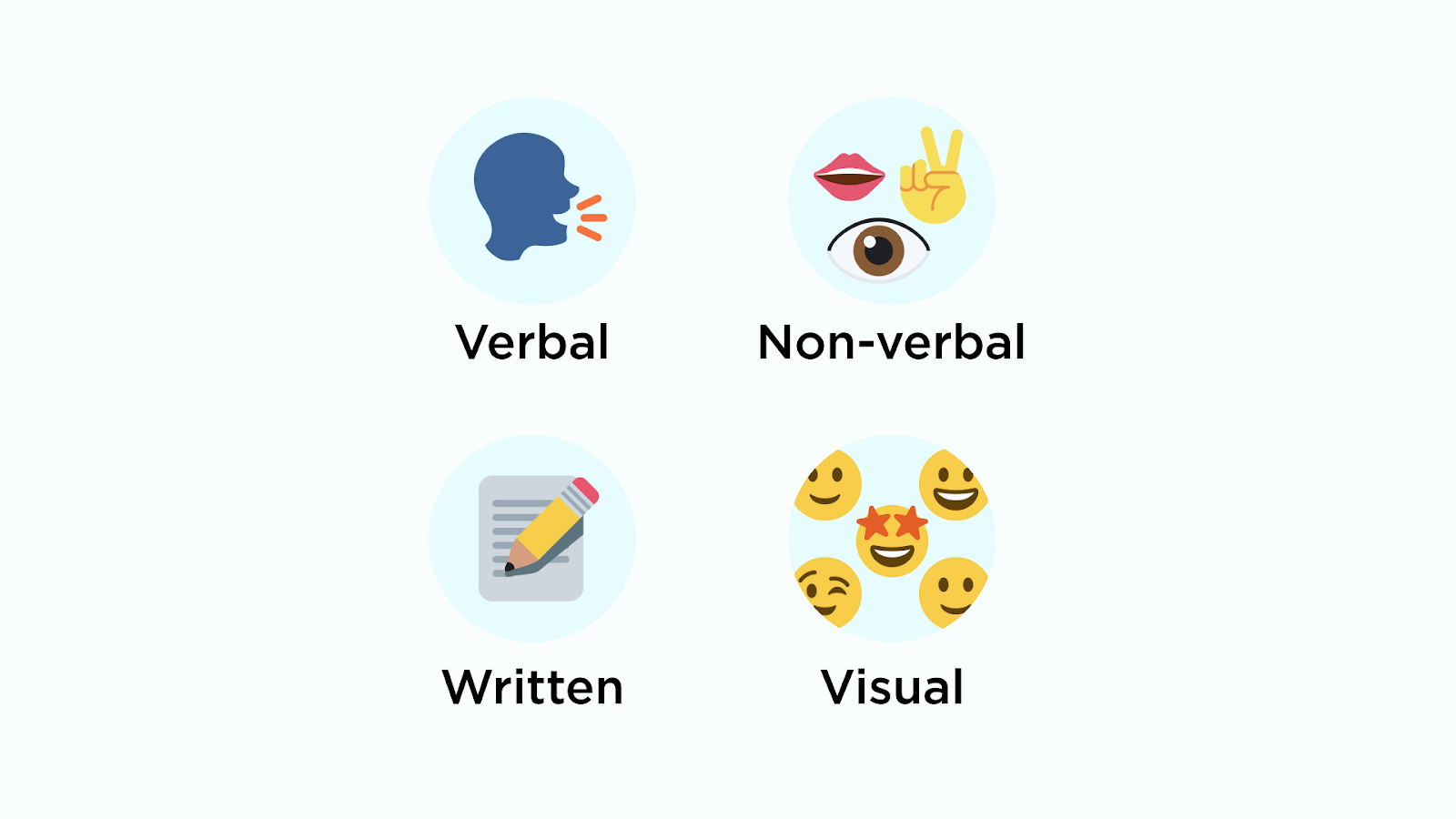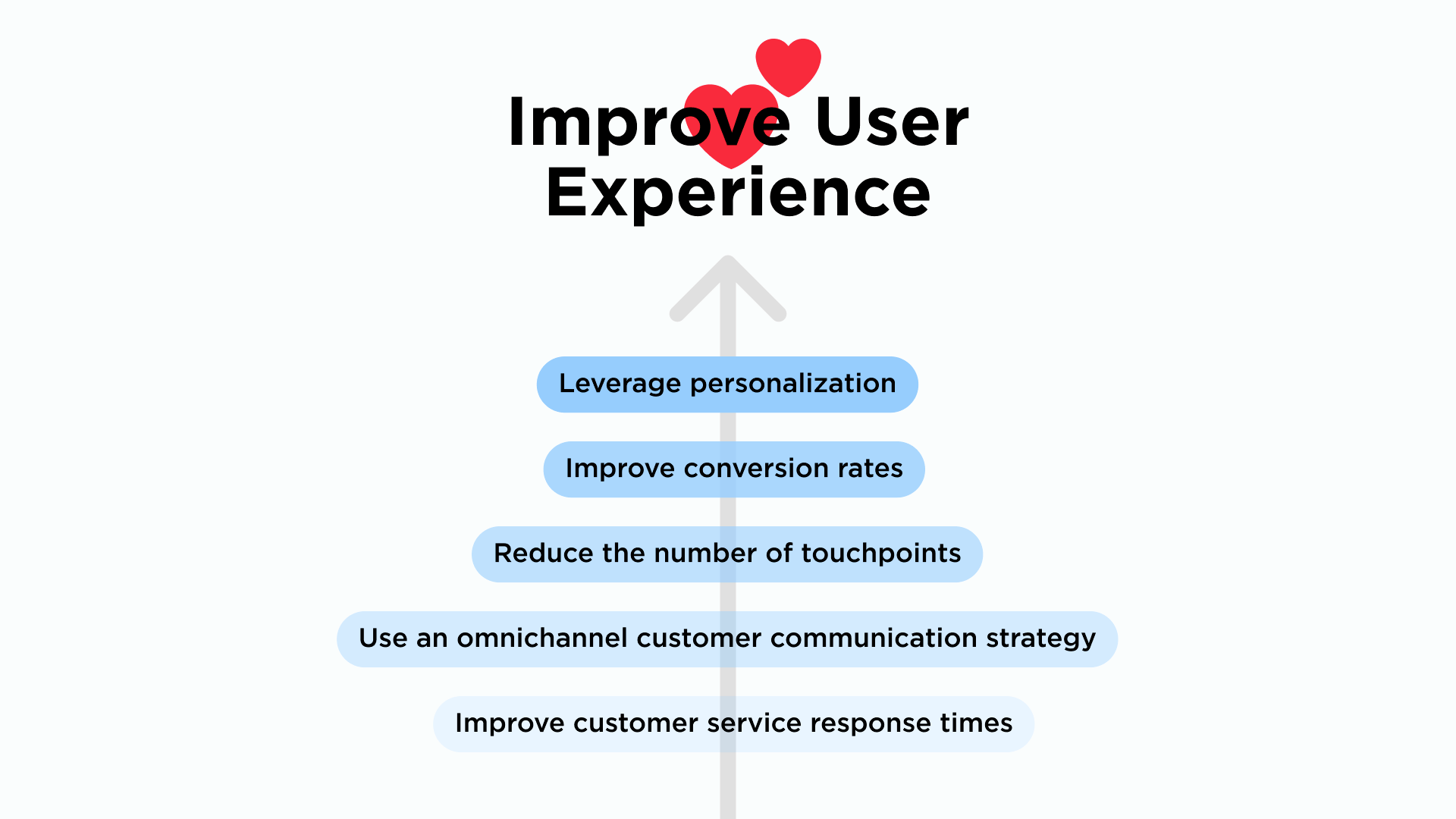How Can You Improve Customer Communication to Boost Sales?
Discover our tips on how to increase sales and forge stronger customer relationships.

There is an easy and proven way to enhance conversions and retention rates: analyze and improve your customer communications.
In today's competitive business landscape, effective customer communication is more important than ever. Building strong relationships with your customers can lead to increased loyalty, higher customer satisfaction, and ultimately, better business outcomes.
In this article, I will provide you with ideal strategies to advance customer communication. From utilizing the right communication channels to adopting best customer communication tools, we will cover it all. By following the tips and strategies shared in this article, you will be equipped with the knowledge and skills needed to enhance your sales and build strong, long-lasting relationships with your customers. So let's dive right in!
Table of contents:
What is customer communication?
Customer communication is the interaction between a business and its clients via various communication channels. The main goal of this imparting and exchanging of information is to promote products or services by creating interest, educating, building awareness, and motivating audiences to move ahead with a specific decision.
Moreover, strong customer communication helps develop relationships with the target audience, supports customer engagement, and boosts retention rates.
Nowadays, customer communication is vital because it establishes and maintains trust between a client and business. As with any communication, it serves four major functions: control, motivation, emotional expression, and information.
However, many businesses struggle with customer communication. They may not have a clear strategy in place, or they may be using outdated methods that do not resonate with today's customers. It's important to recognize the value of customer communication and invest the time and resources necessary to improve it.
Before exploring customer communication management, let’s first review specific types and the most popular channels.
Which types of customer communication are critical for sales?
A variety of communication methods, skills, and tactics are vital for both retail and corporate sales.
Businesses should ultimately prioritize incoming communication over outgoing messages by listening to customers and paying full attention to their needs—dedicating all of your attention to each prospect or customer to avoid missing important details about your buyers and in turn taking your interactions to the next level. In other words, the relationship between a vendor and consumer should begin with questioning and analyzing: not pitching. If we cannot listen to the person sitting across from us, we cannot effectively engage with him or her.
Outgoing communication is of course also a must but should not serve as the main priority. Consider this the second step in customer relations that occurs after a match is made between your product and a client need. With outgoing communication, brands typically distribute information about their values, products, or services to an audience interested in their offerings.

Nowadays, businesses utilize the following communication types to connect with consumers:
- Verbal: voice-based communications—including direct face-to-face, over the telephone, or via online meeting platforms—that may occur during multiple stages of the sales process.
- Non-verbal: includes facial expressions, posture, eye contact, hand movements, and touch, usually occurring when a sales rep meets with and speaks directly to an audience.
- Written: text-based information exchange between a brand and a customer, which dominates communication in the digital era and is why businesses should keep an eye on any brand-related content, analyze all inquiries, and ensure all messages are clear and accurate.
- Visual: a groundbreaking way to interact among groups of people and companies, as we are a visual society. All images and videos exchanged should have meaning, steer clear of controversial material, and serve a purpose.
Given the above, it is critical to listen to your customers first and act last in order to maintain strong customer communication. Customers and the ability of a business to engage them are inevitable factors that help organizations prosper.
Popular customer communication channels
We can assign all customer communication channels to one of several general groups: voice-based, visual-based, text-based, and face-to-face. We can also segment channels into two verticals: traditional and digital.
Here is a list of popular communication channels, both traditional and digital, utilized to engage customers in 2022:

A website chatbot or live chat feature is an extremely popular way for customers to contact businesses, ensuring quick responses and operating as a 24/7 conversation channel. The majority of online businesses have already employed chat widgets on their websites since modern customers prefer live chat over any other contact channel—with companies that use live chat seeing increased revenues. This feature has become a “must-have” communication tool for any business. Moreover, companies can install widgets such as Umnico Live Chat on any website (for free!) in a matter of minutes.
Messaging as a way to communicate has the reach, acceptance, and high open rates appreciated by brands. Per Forbes, 6 out of 10 people believe businesses should use messaging more often to communicate with customers. The popularity of messenger marketing is increasing in a variety of business verticals. Since 9/10 of smartphone users access messaging apps such as WhatsApp, Facebook Messenger, and Telegram, these platforms have added new meaning to communication among users—and also between companies and customers. Social media platforms associated with some messengers are also defined as a great way to communicate, with many customers preferring to discover brands in this manner. Brands may therefore benefit from social media groups and forums that foster the ability to connect with a group of clients possessing similar interests. Hence, companies should leverage the user base and reach of social media to meet sales and marketing targets. Any company can employ a business messenger strategy with no hustle and a big budget thanks to omnichannel messaging platform Umnico, which unites all text-based communications into a single window.
Per Kingsta, old-fashioned email continues to shine through as a top-3 distribution channel for both B2B and B2C companies. This strategy has always served as a reliable form of customer communication, appreciated for its ability to support ever-growing relationships. Many businesses rely on email for traditional communication when an immediate response is not required.
Phone communication is still vital and monopolizes many areas of business as an excellent communication channel to discuss important/urgent issues with customers and deliver prompt responses. The phone is often used as a core channel of business communication when visuals are not required to share or exchange information with clients. Nevertheless, this communication strategy requires many resources. For example, a sales rep can process only one call at a time, and long-distance call costs apply in many situations.
Face-to-face communication is another evergreen engagement type that is important for building trust and establishing transparent relationships with customers. Furthermore, this communication channel makes it easy to quickly exchange information and ideas. High-volume deals and key decisions are still made via client meetings. However, one-to-one and group meetings are becoming more digitized by shifting these experiences from offline to online channels with video conferencing solutions.
Last but certainly not least, traditional channels including TV, radio, newspapers, and magazines are still popular among wealthy and business audiences—serving as a safe and trusted source of brand information that can spread awareness among a broad audience.
The aforementioned communication channels are essential for businesses to listen to their audience and deliver messages to customers while achieving marketing, sales, and support goals.
Ideal strategies to foster customer communication
The following tips for improved customer communications have already helped over 70% of our global clients enhance customer relationships and engage in efficient communications.

Provide speedier customer support and improve your customer service response times. In highly commoditized markets, it is mandatory to deliver customers the experiences they want in a quick manner. When customers reach you, they expect to receive an immediate response or solution in a matter of minutes. Look to improve by setting automatic responses to inform customers they will hear back from you soon, also utilizing chatbots and predefined answers for frequently asked questions. You should categorize inquiries or tickets based on priority, in turn giving your team members the choice to address inquiries based on subject matter or difficulty level.
Employ an omnichannel customer communication strategy. Omnichannel communication is a multichannel approach to customer touchpoints that is unique due to its focus on providing a seamless customer experience via each and every channel. Consider and unite all platforms and devices your customers use to engage with your brand. For example, Umnico Inbox can help you offer multiple channels for customer interaction—decentralizing tickets and preventing the primary channel from getting bombarded with requests.
Consider reducing the number of touchpoints. According to Forbes, doing so saves companies time and money. Achieve this goal by enhancing your marketing message and reviewing your buyer's journey while automating some interactions to reduce human factor risks. Your CRM can trigger and send some follow-up emails or messages automatically.
Improve conversion rates by helping customers find suitable solutions to any issue. Optimize your marketing collateral and customer relations to produce quick and accurate answers to expected customer questions.
Add a personal touch when communicating with customers. New technology makes it easy to track the online activity of a customer, identify habits and interests, and deliver personalized content. Strike a friendly tone by addressing your customers by name and referring to individual interests to forge stronger bonds. Initiating personalized conversations on a regular basis can also boost customer loyalty. Therefore, collect and leverage as much information about your customers as possible to provide offers that meet their needs.
Finally, aim to create a better customer experience on a daily basis. Audit current customer experience from multiple internal perspectives, capturing customer and front-line employee feedback. You can use a dialogue monitoring tool to analyze user experience signals and generate/act upon communication insights. For example, Umnico Inbox helps business managers regularly measure customer experience metrics by tracking sales data, conversion rates, hits, quality rates, and the speed of staff request processing.
Now that you have a clear picture of what to do, try to avoid the most common mistakes: employing generic-sounding messages, making empty promises, and interacting with potential customers too frequently or too seldom.
Let's move forward by reviewing some of 2023’s most popular customer communication platforms and tools.
Top customer communication tools
Several types of customer communication tools are designed to manage relationships in an effective manner.
- Customer relationship management (CRM) software allows businesses to manage and track customer interactions and is a popular tool to track deals and customers.
- Help desk software offers a central point to manage, respond to, and track current customer conversations from a variety of channels.
- Chatbot and live chat software offer the immediacy of phone support while allowing agents to engage in multiple conversations simultaneously, adding malleability and reducing costs.
- Business messaging software provides an ideal way to send updates to customers and is currently the trendiest channel to communicate with brands in a convenient manner.
- Call center software can manage customer conversations that take place over the phone.
- Email marketing software can manage one-to-many communication for actions such as new product launches or newsletter distribution.
- Knowledge-based software is necessary to build and manage help center resources so customers can successfully search for answers to their questions.
- Survey software aims to glean valuable insights from customers (e.g., to measure satisfaction rates or gather specific information up front).
- Social listening software is an important solution to manage all social channels in one place, schedule posts, and respond directly to customer comments and direct messages.
- Virtual meeting software is a crucial sales team resource to provide product demos or discuss details in real time. Customer success teams take advantage of this to run webinars, perform customer onboarding tasks, and schedule one-to-one customer conversations.
Whether you are looking to improve your customer support strategies, inform users about new features, or assist customers, there is a tool out there to help you.
Did you know that with Umnico Inbox, you can leverage the functionality of listed tools all from one platform? This service can introduce you to a broad range of instant messengers and help you employ them to boost your online sales and improve customer support. Thanks to social media CRM capabilities, you can track the progress of each deal and distribute inquiries among your staff.
Start optimizing customer communications with Umnico to improve conversion rates and boost sales among your customers—consistently improving communication at no cost.
Sign up for a free trial or add Umnico Live Chat to your business website. It is free and utilizes an instant messenger widget, so you can continue the conversation on social media, track the status of each dialogue, and systematize your entire communications.
How to measuring the success of your customer communication efforts
Overall, measuring the success of customer communication efforts in 2023 involves tracking a variety of metrics to gain insights into the effectiveness of communication strategies. Here are some technologies you can leverage to enhance your communication efforts.
- Consider Sales and Revenue Impact by evaluating conversion rates for leads generated through communication efforts, from email sign-ups to completed sales transactions, and connecting communication efforts with actual revenue by attributing sales to specific campaigns, messages, or customer interactions. You also need to take into account the expenses associated with different communication channels and touchpoints when evaluating the cost-effectiveness of customer communication efforts.
- Monitor the Engagement Metrics of your messages and emails, such as Open Rates and Click-through Rates. These should help you to gauge audience engagement.
- Measure Response Times to customer inquiries across various channels (e.g., chat, social media, emails) to evaluate the speed and effectiveness of customer support.
- Assess Net Promoter Score (NPS) to quantify customer sentiment and loyalty. NPS surveys can help gauge overall satisfaction and willingness to recommend your brand.
- Survey your customers. Collect qualitative feedback through surveys and polls to understand customer opinions about communication clarity, relevance, and helpfulness.
- Track Behavioral Analytics. Monitor website behavior, such as time spent on key pages, bounce rates, and conversion rates, to understand the impact of communication efforts on user actions. For businesses with mobile apps, track in-app engagement metrics, including session times, feature usage, and retention rates influenced by in-app messages and communications.
- Run Qualitative Assessments to evaluate the relevance and impact of communication content, messaging tone, and overall brand voice. Furthermore, leverage sentiment analysis tools to understand overall customer sentiment and identify opportunities for improvement in communication strategies.
- Analyze customer retention rates based on cohorts to understand how different customer segments respond to your communication efforts.
- Keep track of brand awareness, referral rates, and sentiment trends to see how communication efforts affect brand equity and perception.
- Use segment-specific metrics and assess communication success within specific customer segments, such as new customers, loyal customers, or different demographic groups. Keep in mind that you need to assess specific metrics for different communication channels, such as social media engagement, chatbot interactions, and click-to-open rates for messaging platforms. In addition to that, do not forget to leverage multi-touch attribution models to understand how various communication touchpoints contribute to customer acquisition, retention, and conversion.
By combining quantitative and qualitative metrics across these areas, businesses can gain a well-rounded view of the success of their customer communication efforts. It's important to establish clear objectives, set benchmarks, and regularly review and adapt measurement approaches to align with evolving customer preferences and business goals.
Examples of companies with exceptional customer communication
Effective customer communication can vary across industries, as each industry has its own unique characteristics and customer expectations. Here are some best practices for customer communication in different industries:
- Retail: In the retail industry, customer communication should focus on providing product information, assisting with purchase decisions, and offering post-purchase support. Personalization and proactive communication are key to building lasting relationships with customers.
- Hospitality: In the hospitality industry, customer communication plays a vital role in providing exceptional guest experiences. Clear and timely communication regarding bookings, amenities, and special requests is crucial. Utilize technology tools such as booking systems and automated emails to streamline communication processes.
- Financial Services: In the financial services industry, customer communication should prioritize trust, security, and confidentiality. Clear and transparent communication regarding account information, transactions, and policies is essential. Ensure that your communication channels are secure and compliant with industry regulations.
- Healthcare: In the healthcare industry, effective communication is critical for patient care and satisfaction. Clear and empathetic communication with patients, their families, and other healthcare providers is essential. Utilize technology tools such as patient portals and telemedicine platforms to enhance communication and accessibility.
Remember that these best practices are not exhaustive and may vary based on your specific business model and customer base. It's important to understand your industry's unique communication requirements and adapt accordingly.
To sum up, it is needless to say that customer communication helps brands increase profits, improve their image, and place their business ahead of competitors. Hence, entrepreneurs and companies should continually work to improve communications with clients to sell more and retain consumers over an extended period of time.

Subscribe to Umnico news!
Be the first to get recommendations and up-to-date information
